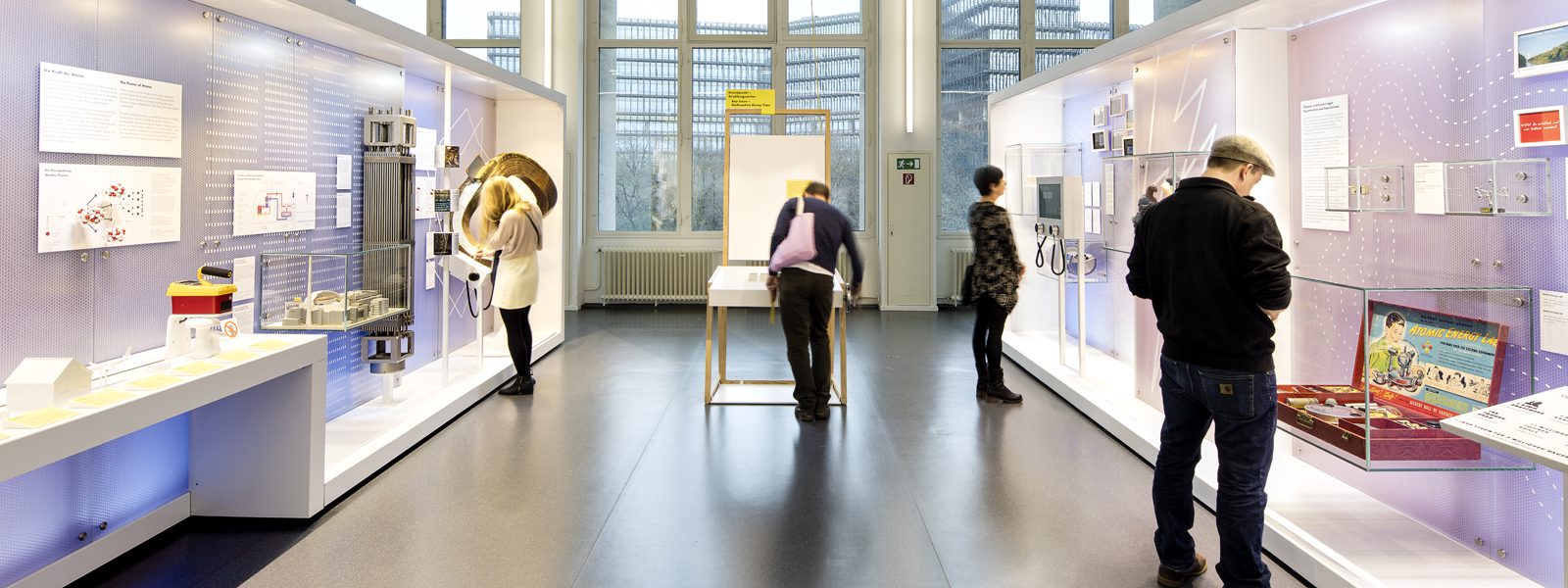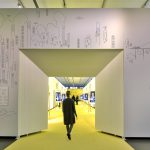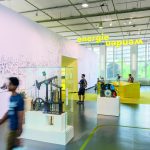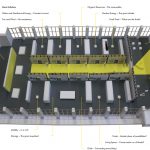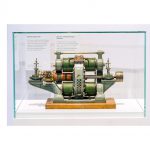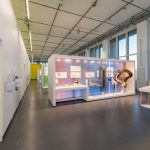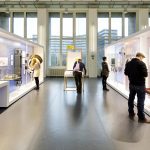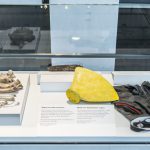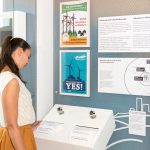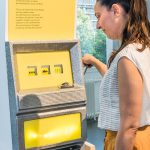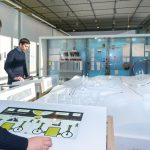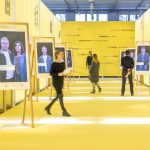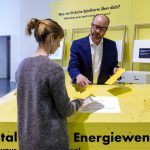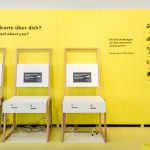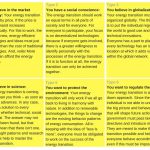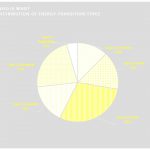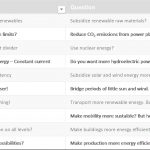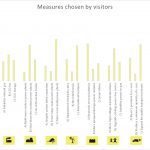Turning energy around: an interactive exhibition experience
Article DOI: https://dx.doi.org/10.15180/180909
Abstract
A transition from the fossil-fuel driven to a sustainable energy system is an enormous global challenge: climate change and finite resources require countries all over the world to change their way of producing, transporting and using energy. The Energiewende (energy transition) will require major changes in the current energy supply system in Germany – but also worldwide. These changes will not only affect the technical sector but will also include ecological questions, social issues and political matters.
Whether any transition is going to favour large scale solutions or decentralised technologies depends on local situations and global interconnections, and above all on a democratic process. Hence energy transition succeeds or fails with the acceptance and participation of society. To deal with this overwhelmingly complex topic and its multi-layered dependencies, the Deutsches Museum has designed an exhibition providing visitors with background knowledge about the necessities and challenges of energy transition, unpicking the links between the different technical, economic and social challenges. The exhibition accomplishes the task with an engaging and facilitating approach while taking into account the highly emotive aspects of energy transition as a societal issue. This paper presents the concept of the travelling exhibition energie.wenden, relating it to the Deutsches Museum´s tradition of exhibitions as well as to the challenge of how to deal with socio-scientific topics in scientific exhibitions.
Keywords
decision making, Deutsches Museum, energy literacy, energy transition, engagement, exhibition design, role playing game, socio-scientific issues, special exhibition, travelling exhibition
Energy transition(s) – a global challenge
https://dx.doi.org/10.15180/180909/002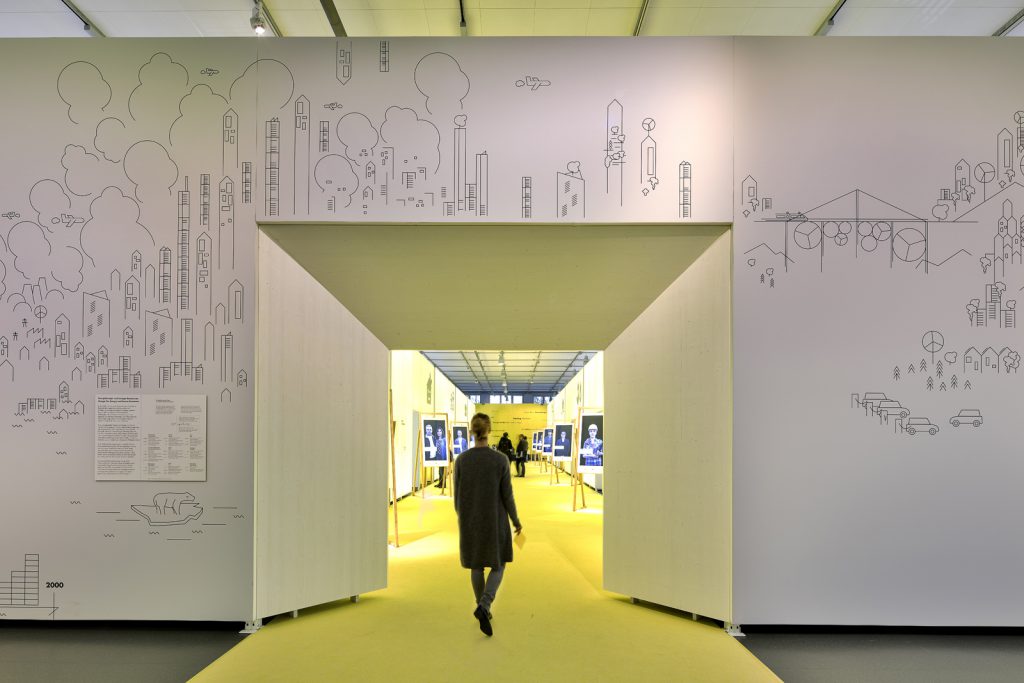
Over the course of human history, humanity has repeatedly found new energy sources to exploit. These sources supplemented or replaced existing ones, constantly changing which resources we relied on most. Today, many countries are engaging for the first time in discussions about a deliberate and fundamental transformation of their energy supply.
During the COP21 in Paris, 195 countries agreed to limit global warming by increasing the share of renewable energy and raising the overall energy efficiency or even by reducing fossil fuel subsidies (REN21, 2016, p 17). The two main goals are to reduce CO2 emissions and to achieve a fairer distribution of global emissions and resources. This politically guided transformation of the worldwide energy system is historically unprecedented. Whereas past energy transitions were generally based on exploiting new resources with a high energy density, the current transition is motivated by a broad political consensus. It is not meant to result in an increased energy demand but rather in a reduction of energy use (Kupper, 2016, p 15). While energy transition in general seems to be a unifying worldwide political goal, the paths to a sustainable energy system can be very different. The most notable difference between countries may be the role of nuclear energy. While Germany decided on a phase-out of nuclear energy, some countries judge nuclear energy to be an essential contributor to a sustainable energy supply system.
The exhibition energie.wenden reveals and disputes these different paths and invites visitors to actively take part in the political process of shaping energy transitions. This is reflected in content and design as well as in the exhibition title. Being a play on words energie.wenden can be interpreted in different ways: on the one hand it can be read as the plural of the German term Energiewende[1], indicating past and recent energy transitions. On the other hand, it is a direct invite to visitors to turn the existing energy supply system upside down. Hence the literal and more demanding translation of the exhibition title turn.energy.around.
This call to action does not only relate to the German Energiewende but rather to the global challenge of energy transition. It rests on general facts and processes applicable to various areas worldwide and takes on an international perspective. The exhibition opened on 14 February 2017 at the Deutsches Museum. After being on display until 19 August 2018 the exhibition will travel to other museum destinations worldwide.
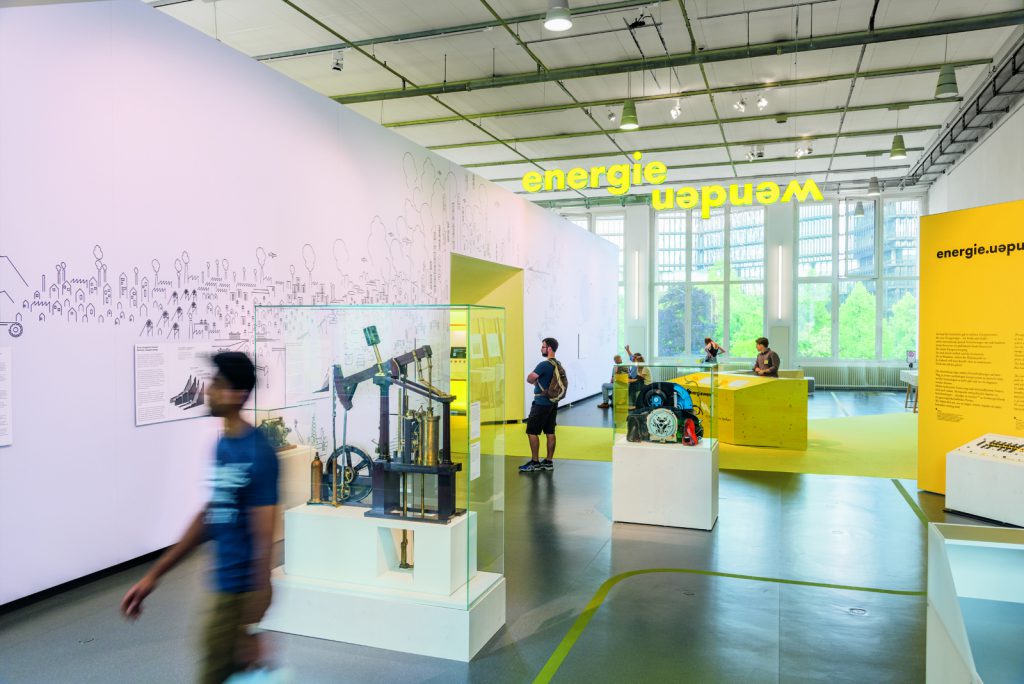
A ‘wicked problem’
https://dx.doi.org/10.15180/180909/003The subject matter of energy transition fits perfectly into science museums: connected to the history of energy supply and future technologies the topic enables curators and exhibition designers to showcase historical and recent inventions, and talk about their socio-historic background and implementations as well as about their mode of operation. The subject may even fit parts of the museum collections, thus playing to the core strengths of museum collections and their collecting rationales.
However, present-day science museums and science centres do not only explore historical or scientific objects and experiments. It has become more and more important to encourage critical thinking and allow visitors to make up their own mind on contemporary issues (Ballantyne, 2006, p 286). Energy transition as one of these issues deals with a variety of complex environmental and social questions. Helping the public understand this complexity is not only crucial but also difficult to do (see Dillon, 2017): the transformation of the energy system is not a one-dimensional problem but can be described from numerous angles. There is no right or wrong approach, nor an existing ultimate test for possible solutions. At the same time, any kind of solution attempt has real consequences. Horst Rittel and Melvin Webber named these kind of social policy problems ‘wicked problems’. They contrasted them with ‘tame problems’ that science can usually deal with (Rittel and Webber, 1973, p 155).
The Deutsches Museum decided to take on that ‘wicked problem’ and to contribute to the understanding and acceptance of energy transition. The Museum is convinced that a transition from fossil fuels to alternative energy sources and a more responsible stewardship can only be successful if science, the general public, business, and politics work together in the pursuit of common goals. Simultaneously the exhibition is a natural continuation of the Museum’s exhibition history. The topic of energy has existed at the Deutsches Museum since its beginnings early in the twentieth century and features in plenty of the permanent displays, such as the exhibitions on physics, power machinery, electric energy and modern energy technologies. At the same time, the Deutsches Museum has dealt with social and environmental issues on several occasions, in particular in the previous special exhibition: Welcome to the Anthropocene. The World in Our Hands (Möllers, Schwägerl and Trischler, 2015).
Clear exhibition structure for complex content
https://dx.doi.org/10.15180/180909/004We believe that there is no ‘right’ or ‘wrong’ energy transition, but rather different paths that lead to successfully achieving a sustainable energy system. The main message of the exhibition is: Let’s make energy transition happen — but how? By choosing a rather informal design and colloquial form we explicitly address a target audience of students and young adults (from about 14 years on) who we consider crucial to the transformation process[2]. To facilitate participation, we provide general scientific knowledge as well as social context and motivate visitors to make their own decisions – within the exhibition as well as in real life.
Setting
The exhibition consists of three parts: a prologue, the main part including the interactive game, and an epilogue.
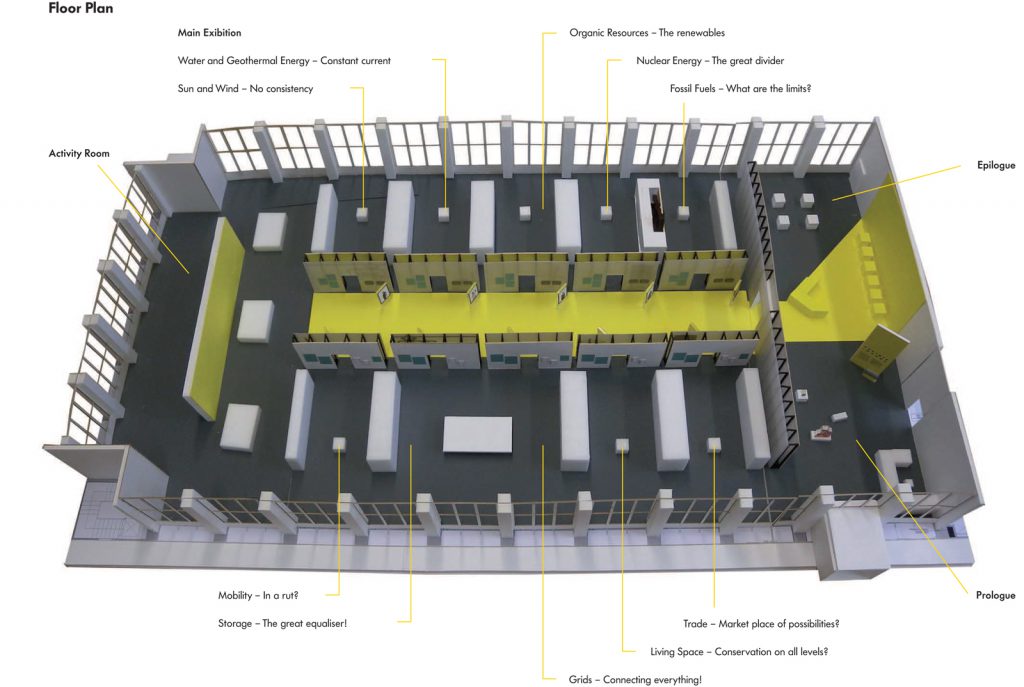
Prologue
Upon entering the exhibition, visitors encounter emblematic objects depicting major changes in the energy supply system from the beginning of industrialisation to the current situation. The objects represent both technological and historical transformations: the transition from a wood-based to a coal-based energy system, the electrification of the world and finally the fossil fuel era, which began in the second half of the twentieth century and led to a massive increase in energy consumption (see Figure 4).
A timeline consisting of graphics and illustrations serves as an opportunity to learn about general terms and principles of energy. It also illustrates how energy consumption, population and CO2 emissions have grown vastly over the past decades. By the time visitors reach the end of the prologue it has become clear that humanity’s tremendous thirst for energy led to two major problems: the depletion of finite fossil fuel resources and global warming, caused by the combustion of these fuels.
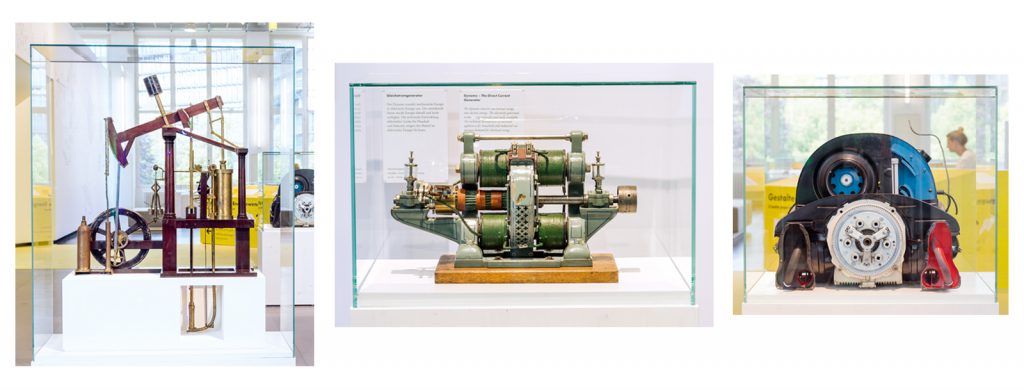
Main exhibit
At this point, visitors are asked to take action. We ask them to get involved and design their own energy transition. Slipping into the role of a politician they meet virtual stakeholders who confront them with their opinions and demands. The visitors finally need to take a stand and choose political measures to advance their energy transition. This role-playing game takes place in the so-called ‘Political Arena’ located in the centre of the exhibition (yellow area in Figure 3). To provide visitors with helpful clues, basic facts and ideas, we created Thematic Rooms dedicated to ten different fields of energy transition, which serve as knowledge repositories:
- Organic Resources – The renewables
- Fossil Fuels – What are the limits?
- Nuclear Energy – The great divider
- Water and Geothermal Energy – Constant current
- Sun and Wind – No consistency
- Storage – The great equaliser!
- Grids – Connecting everything!
- Mobility – In a rut?
- Living Space – Conservation on all Levels?
- Trade – Market place of possibilities?
These Thematic Rooms can also provide a more classical exhibition experience. Visitors can choose to stay out of the political arena and enjoy memorable exhibits, fascinating demonstrations, and informative media stations and graphics.
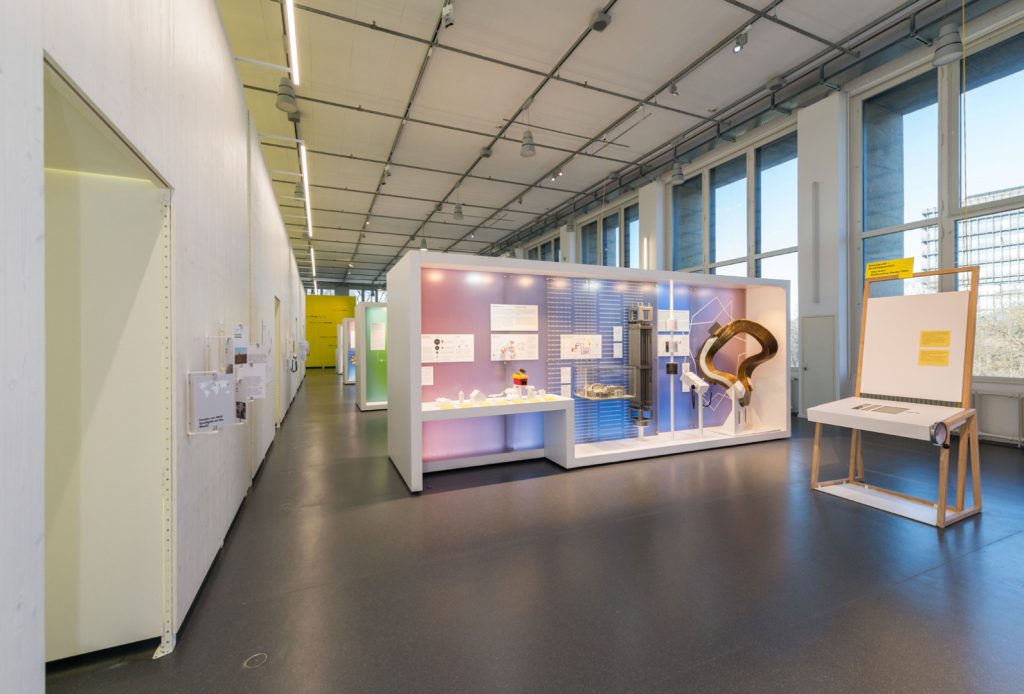
Furthermore, each Thematic Room includes various recurring elements. For example, specially designed world maps provide an initial overview of the global situation for each room and a series of ‘Spotlights on the World’ illustrate the very different approaches to sustainable energy supply around the globe. Another recurring element is the ‘Key Issue’, a feature that takes different forms throughout the exhibition. Here, a central challenge to achieving a sustainable and secure energy supply – like the volatility of sun and wind energy – is crystallised into a single, memorable example for each Thematic Room. The issues, which at times can be quite abstract, are thereby made accessible to visitors through an interactive element. In addition, the core issue is always presented in relation to political decision making, thus forming a link between the Thematic Rooms and the Political Arena.
Semi-transparent materials make the Thematic Rooms light and airy, while illuminated backgrounds in different colours give each room its own distinctive aesthetic. A separate background design was developed for each topic; using the form of a storyboard, it combines the exhibits, texts and diagrams into a visual narrative (see Figure 5). This clear organisational concept provides orientation for visitors in the multitude of topics and the highly complex issue that is energy transition. Although there is no set route for visitors to follow, there is a clear guiding structure.
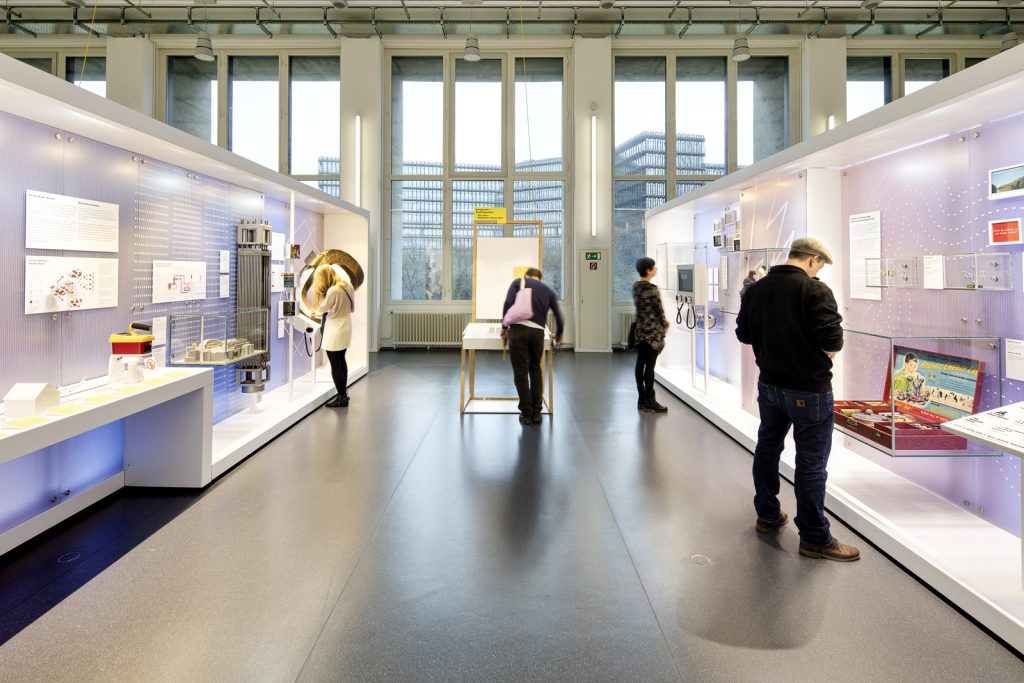
Epilogue
The epilogue closes the circle by taking the visitor back to the prologue, both spatially and thematically: this highlights the continuing story of energy transitions. Additionally, climate targets of individual countries and of the world as a whole are presented. The epilogue also contains a unique art project by Sabine Köhl: in a fictional archaeological dig of the year 3051 curious objects of the year 2050 are discovered. This scenario is an imaginative reflection upon a possible future. Peculiar artefacts and whimsical interpretations depict a world in which a sustainable energy supply system has long been successfully implemented. Looking back from the distant future of 3051, however, it is regarded as unsophisticated. The objects and descriptions challenge the visitor’s imagination, for each person ultimately has to decide for themselves what each of the finds had originally been used for.

Behind the curtains – knowledge repository and emotive challenges
https://dx.doi.org/10.15180/180909/005The exhibition energie.wenden emphasises the public’s ability to creatively contribute to the process of energy transition. This is accomplished, for example, by means of participatory elements that integrate ideas and photographs provided by the public. In addition, numerous interactive elements, such as hands-on displays and activity stations, are included. The following examples illustrate how we tackled, in particular, social and emotive aspects.
The development of new wind farms often face public resistance. Discussions about wind energy can be very emotional and confrontational, not least because there are no easy answers in weighing up the pros and cons of introducing wind farms. Does climate protection really outweigh the fear of potentially harmful effects from noise and alternating shadows? Is it more important to create a sustainable energyscape than protect local landscapes and wildlife? The ongoing discussion is crucial for the future role of wind energy. To illustrate this conundrum, we let visitors decide for themselves. On two separate drums, pro and con arguments are displayed. Turning the drums leaves the visitors with a random combination of one argument for, and one against, wind turbines (Figure 8). The visitors are thereby confronted with the difficulty of having to favour one side, where rational decisions can’t really be made.
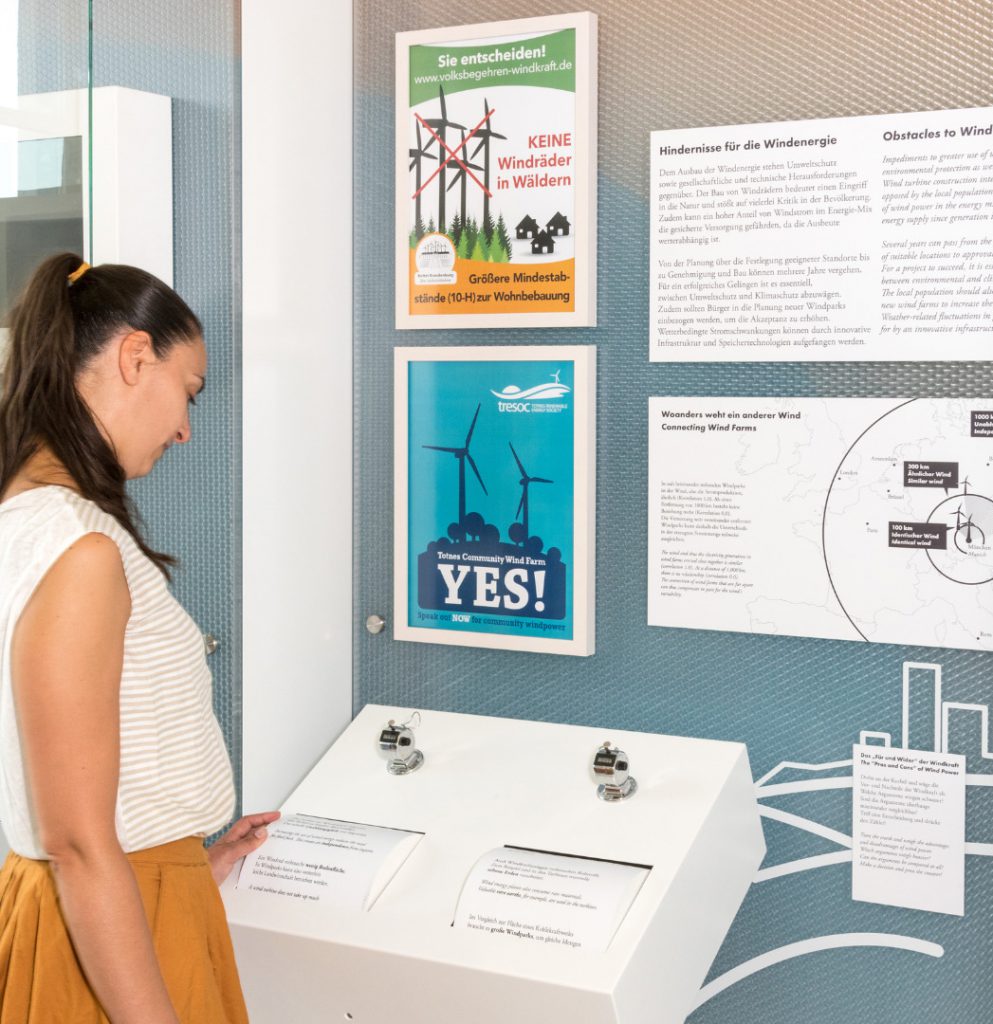
Controversial topics are not only illustrated by interactives, but also by objects. Half of the Thematic Room on nuclear energy is dedicated to the division between opportunities and risks of nuclear energy. An ensemble of two figures – Godzilla and Astro Boy – strikingly symbolises this ambivalence. The two figures originate in Japan, a country that has experienced both the devastating consequences of nuclear weapons and those of a nuclear accident. But Japan is also a country whose electricity generation relied to almost one third on nuclear energy up to 2011[3]. In the exhibition, the two icons face each other irreconcilably, visually divided by a blizzard (see Figure 9). The creation of the fictional monster Godzilla was inspired by US nuclear bomb tests. Godzilla, being awakened by the tests, takes revenge by spreading his radioactive, fiery breath on humanity. Comic book hero Astro Boy, on the other hand, represents the enormous hopes placed on nuclear energy: the android is powered by a miniature nuclear reactor in his chest and he uses this energy to fight for peace (Schodt, 2007). In 1980, however, the inventor turned Astro Boy´s heart into a nuclear fusion reactor, pointing the way to a potential nuclear energy source far less fraught with dangers.
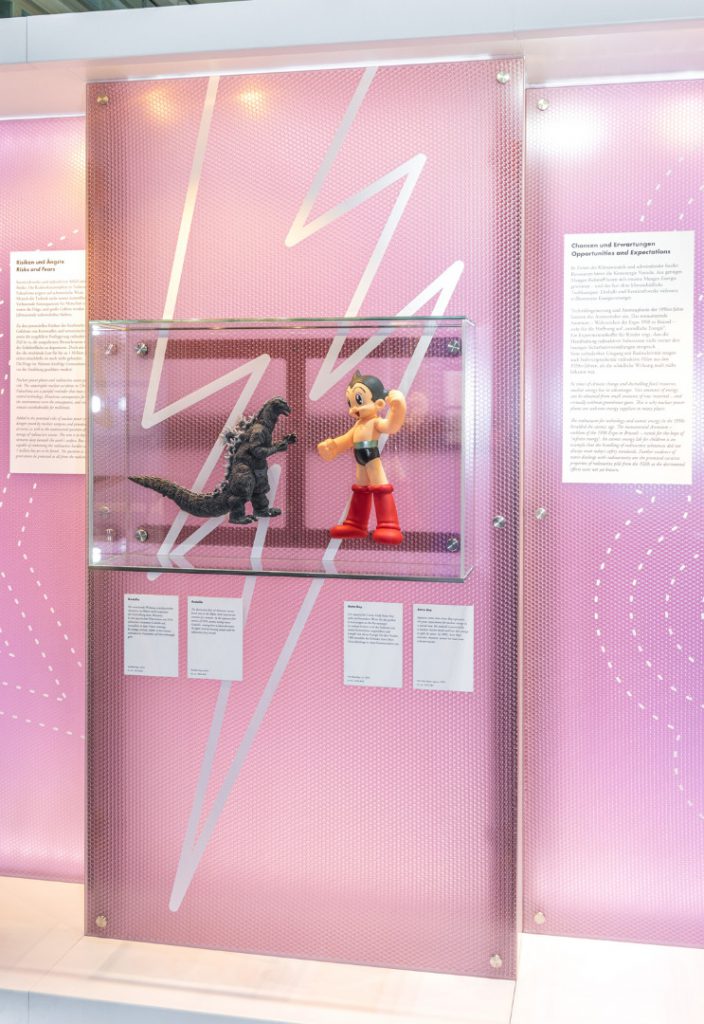
In the centre of each Thematic Room visitors will find the Key Issue, an interactive element illustrating the main obstacles on the way to a sustainable energy system. One of these Key Issues is a slot machine (see Figure 10) located in the room on solar and wind energy. It simulates the volatility of these energy sources, which can make reliable power generation seem like a gamble unless the necessary measures are installed. This bridges the gap to another Thematic Room in which the two topics, energy storage and grids, form an inseparable pair. They frame the common Key Issue – a large interactive topographical model that simulates a future energyscape (see Figure 11). The task for the visitors is to create a stable energy supply based entirely on renewables. At the various consoles, they can adapt the output of the energy generators and the consumption of factories and households. A balance can also be ensured by charging and discharging various storage facilities. A major challenge is to cover shortages or overproduction as a result of the fluctuation from wind and solar plants, depending on uncontrollable (but not unforeseeable) weather conditions. Visitors must also make sure that the same amount of energy is fed into the grid as is being taken out elsewhere to avoid a collapse! But there are certain restrictions: electric cars have to be charged in the morning for the trip to work, factories have to continue producing goods, and at home people want to shower in the evenings or watch the international football match on television. Visitors will soon discover that communication and coordination of their actions is essential, thereby becoming figuratively a Smart Grid themselves.

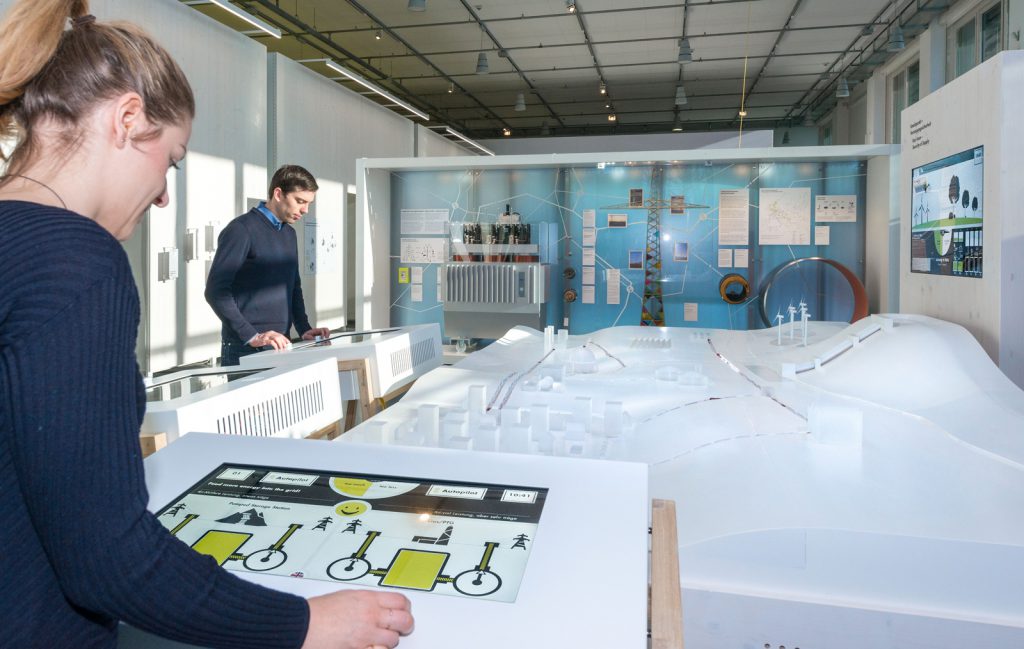
The participatory Key Issues in particular aim to make visitors question their own behaviour in a non-condescending manner. In the mobility room, we show photos contributed by the public. The mobile of pictures forms a colourful potpourri of preferred travel modes, illustrating in a playful way one of the main obstacles to a shift in the mobility sector: we love the way we travel, be it crossing Europe in an old van or island hopping in the Caribbean. However, an energy transition demands that we reduce our travels and move on to more climate friendly forms of transport.[4] Similarly, the Key Issue ‘Buying Happiness’ in the production and consumption room consists of ‘useless objects’ donated by our visitors (see Figure 12). Here a melodica that has never been played lies next to a toilet guest book and a toy motorboat. They all have in common that they were once objects of desire, but in the end only made for a short moment of pleasure and have then been forgotten about. They represent all the grey energy that is embodied in the things we possess and build awareness for the way in which changing consumption patterns can reduce energy usage. The personal stories invite visitors to examine their own behaviours in the light of other people’s useless objects, offering new ways of thinking about what we need and value.
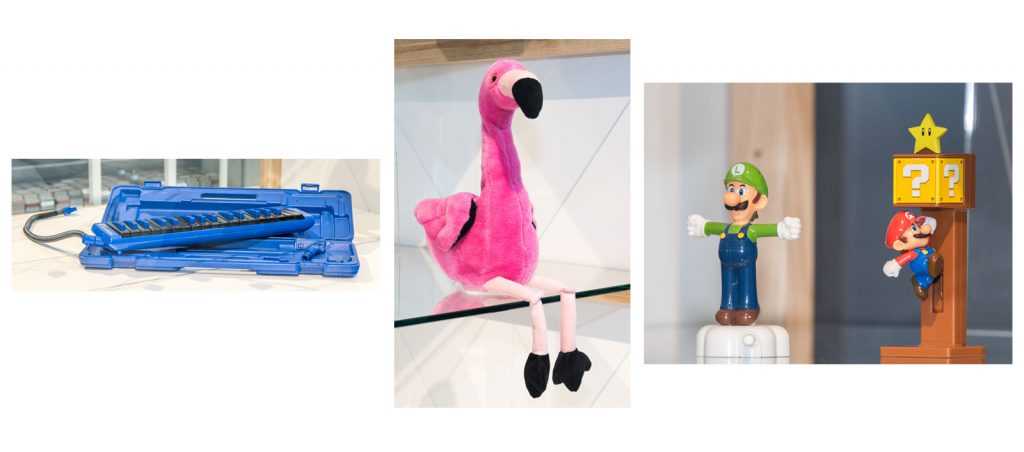
What does your energy transition look like? A role-play interactive
https://dx.doi.org/10.15180/180909/006The issue of energy transition can be as complex and overwhelming as it is important. Getting visitors informed and engaged into this multi-layered topic, the intertwined sub-themes and different dimensions of energie.wenden, was a curatorial challenge. To enable rather easy and spontaneous access to the exhibition – without neglecting the complexity of the issue – we choose a highly interactive design. A role-play enables visitors to design their own energy transition whilst in the guise of a politician. While being a playful approach this game simultaneously poses a central but invisible component in the exhibition: the political decision-making process, which needs to take all aspects into account.
Meeting the stakeholders
As visitors enter the main part of the exhibition they slip into the role of a politician with the goal of promoting an energy transition. They will then enter the political arena and target ten different decision stations, each being thematically and spatially linked to one of the Thematic Rooms. At the consoles, the ‘politicians’ also encounter ten stakeholders, each with their own story and agenda (Figure 13). The filmed actors are brought to life by a motion detector when visitors pass by. The ‘politicians’ will meet, for examples, a power station operator calling for subsidies for natural gas or the managers of an apartment building looking for support in their efforts to energy retrofit the building. They address the visitors directly and demand them to act in their favour. At the decision stations, the politicians finally have to respond to these requests and choose from three different political measures. This can be done directly or after exploring the Thematic Rooms to gain more information on the topic. The stakeholders, however, argue for a quick decision, and it is tempting to comply.
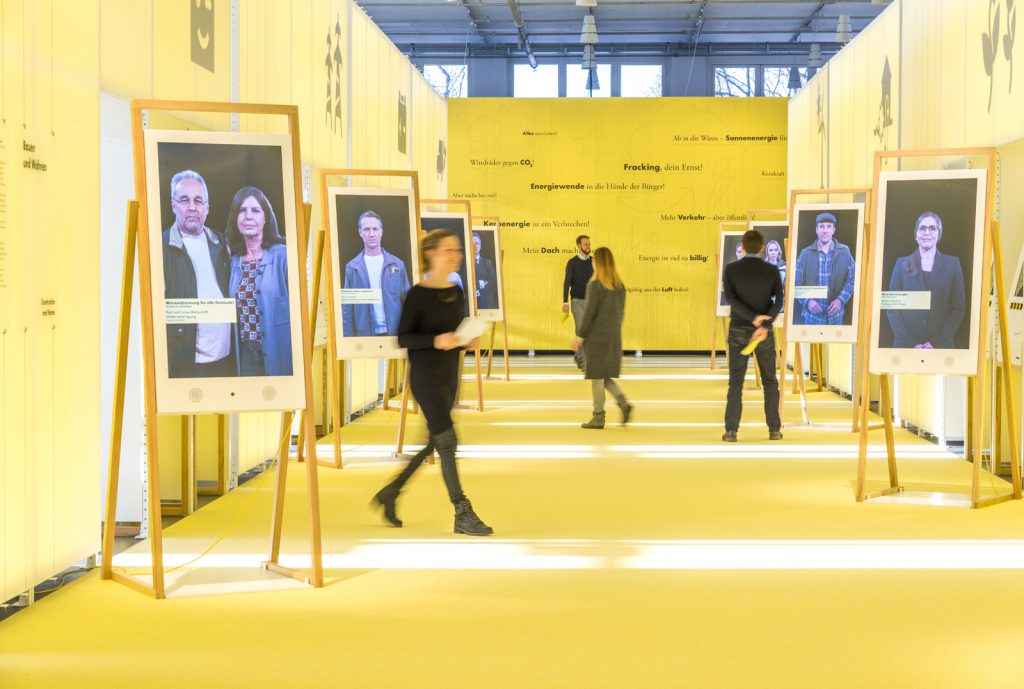
Political measures and voters’ reaction
The decision stations are activated by inserting a playing card which visitors received upon entering the Political Arena (see Figure 14). A question is asked on the screen and the politicians may, for example, be asked how they plan to reduce CO2 emissions from power plants or how production processes can become more energy efficient. Regardless of which of the three political measures is chosen, they all provoke immediate responses: potential voters show up on the screen and object, applaud or have better suggestions (see Figure 15). The visitors will experience how complex a task it is to persuade different interest groups to join the negotiating table. It is essential to keep a cool head and get an overview of the different perspectives, because in the end a decision will have to be made. The visitors have to confirm their final decision by pulling a lever which punches a hole into the playing card, thereby making the decision irrevocably.
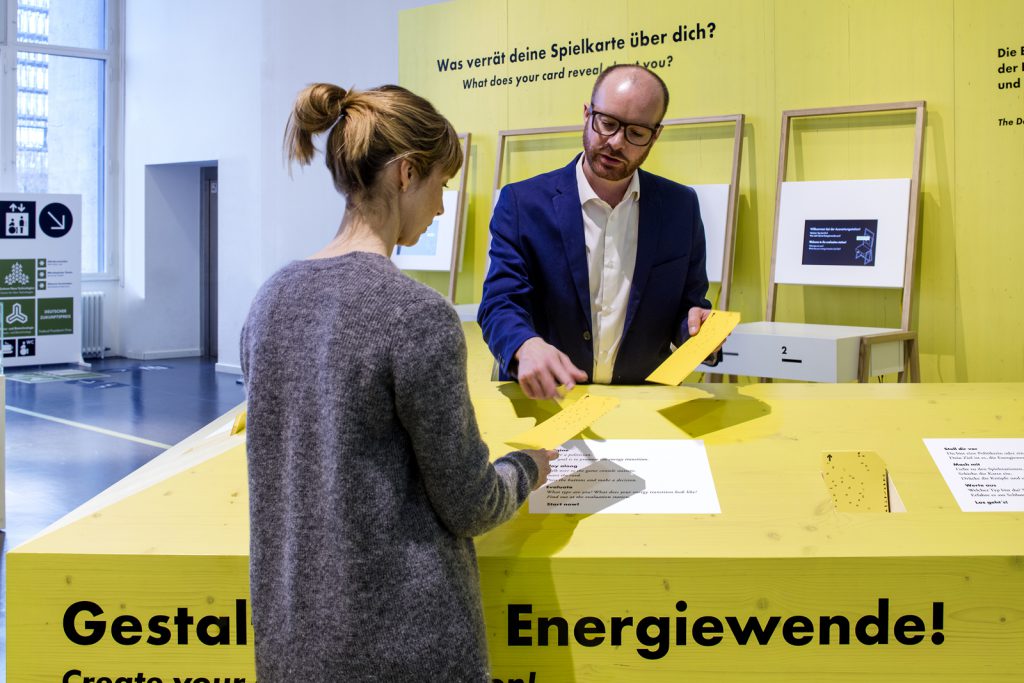
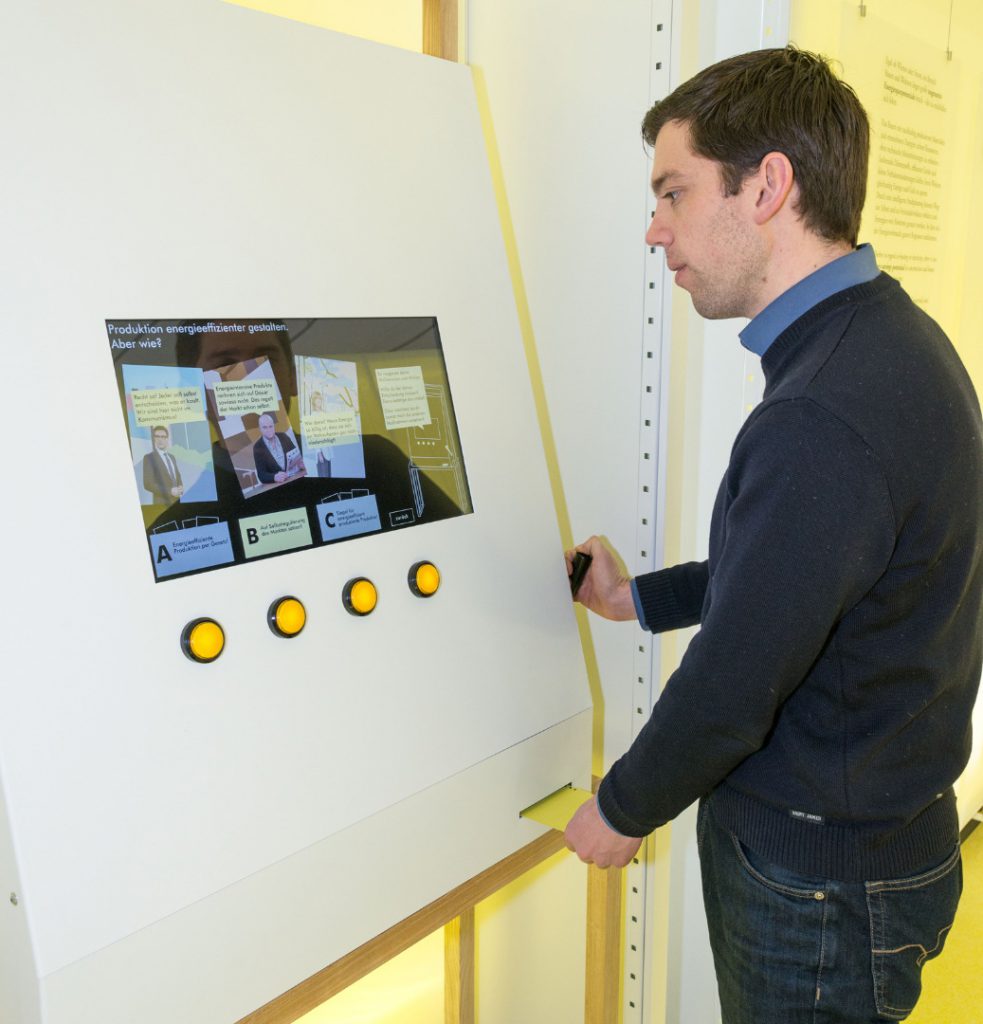
What does your card reveal about you?
After several decisions, the pattern of holes on the playing card can be analysed. At an assessment station, visitors can find out what their decisions reveal about their priorities and how those match up with different political strategies for energy transition (see Figures 16 and 17). An optical read out links the pattern to a scoring matrix and the points given add up to one of six energy-transition types we designed. These types range from market or globally orientated to being very restrictive, focused on social or environmental issues or which believe above all in science (see Figure 18). The six types are roughly based on the four dimensions of societal transition (Technology, Economy, Culture and Policies) (Schneidwind et al, 2013) and reflect the energy policy triad (energy security, sustainability and economic viability) complemented by social justice.
These energy-transition-types are written in a very simple form and describe exaggerated, hypothetical personalities. Even if some may find that their political standpoint is not quite what they were expecting, they are not being judged by their result. We find that their assignment to a specific type generates lively discussions among visitors about their results and choices – which aligns perfectly with our goal: the game as a whole is designed to reveal how individuals, politics, and society contribute to the process of transforming the energy system and how complex and important this political decision-making process is.
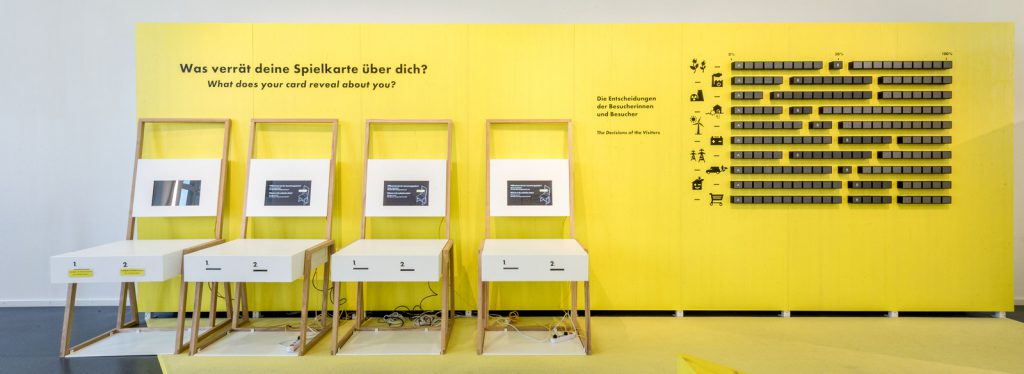
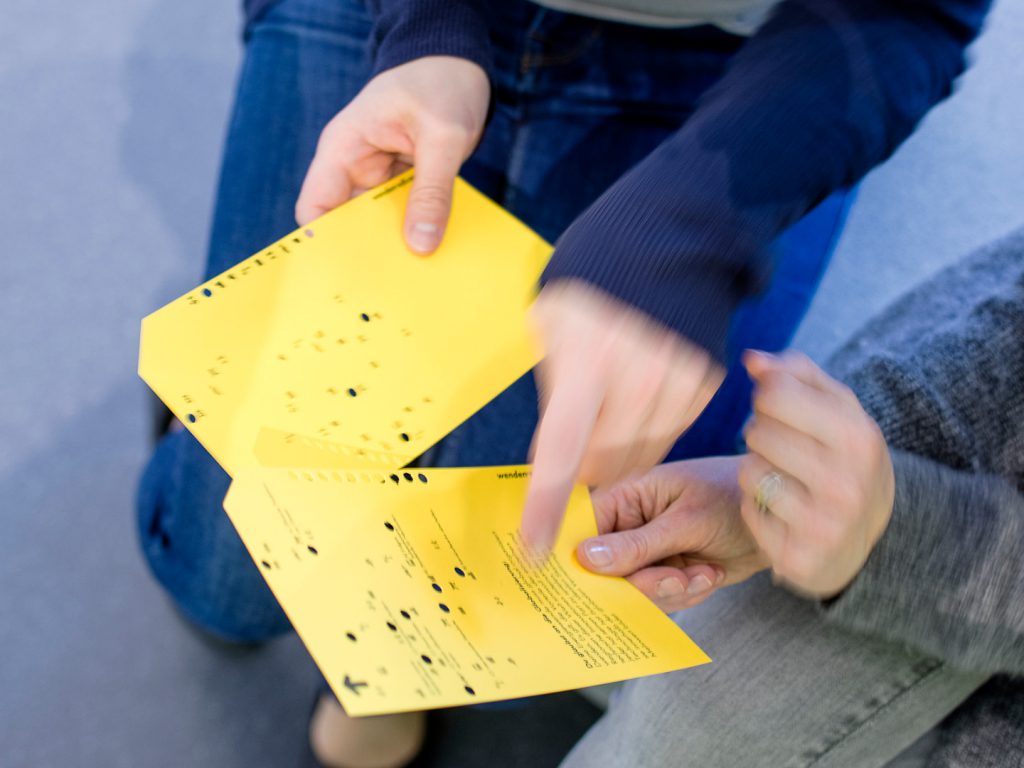
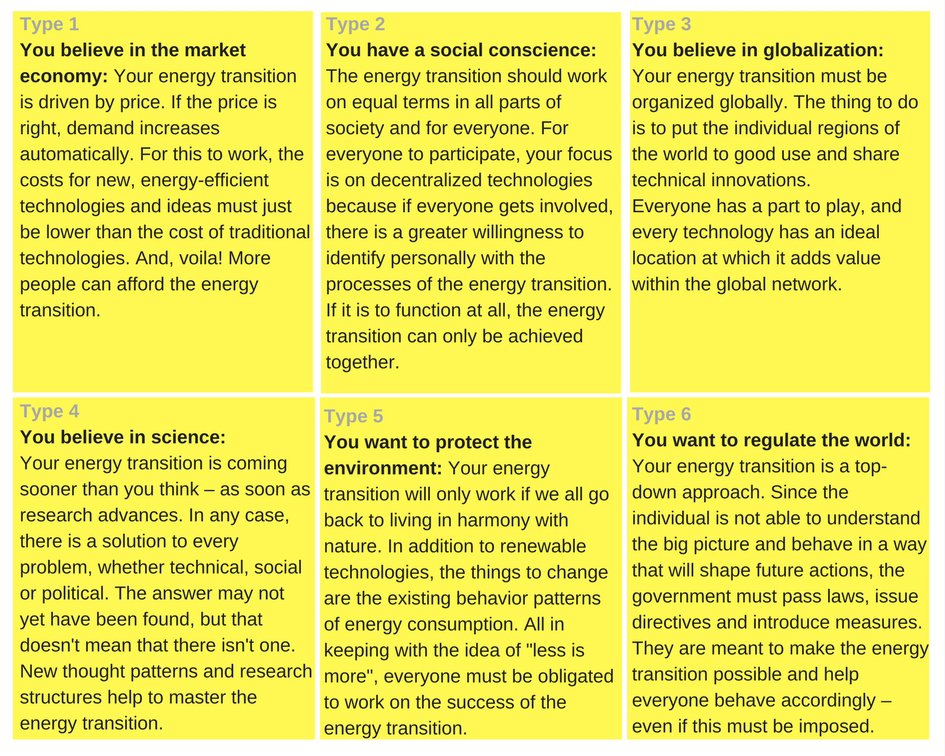
Decisions made – first reactions and outcomes
https://dx.doi.org/10.15180/180909/007The exhibition opened on 14 February 2017 and we were pleased to see that over 420,000 people have visited the exhibition in one year (the exhibition runs until 18 August 2018). Up to 14 July 2017, 22,650 game assessments had been conducted. By sheer numbers only every eighth visitor appears to have played the game. But first observations conducted by the exhibition’s hosts show that visitors often participate in the game in a group – deciding together on which possible measures and discussing pro and con-arguments. This means that the visitors take their time to deliberate about the different topics, exchanging ideas and opinions. Another interesting observation is that visitors actually use the Thematic Rooms as knowledge repositories when they are indecisive about their political decision. Naturally, this insight is only based on first observations. However, the conducted assessments already provide interesting data.
The most common energy transition type is ‘Global’ (30 per cent), followed by ‘Ecological’ (22 per cent) and ‘Social’ and ‘Scientific’ (both 16 per cent) pursued by ‘Economic’ with 12 per cent. Only 4 per cent of our visitors have been assigned to the ‘Regulative’ type (Figure 18 and 19).

Not all participants answered all ten questions, but except for the decision station associated with the Thematic Room ‘Organic Resources’[5] the number of visits to each station was comparable (third column Table 1). Which answers were chosen at which decision station is shown in Table 2. The three political measures provided always follow the same pattern: the first measure (A) paraphrases the stakeholders’ demand; the second one (B) describes an opposing option; while the last option (C) represents a third independent measure.
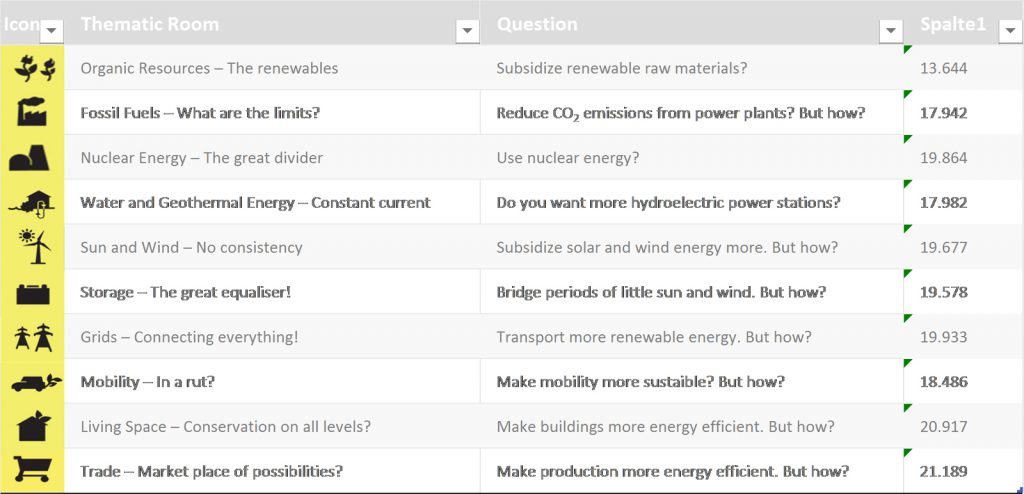
The pattern of chosen political measures will be analysed in depth after the evaluation. But at first glance visitors do not seem to be influenced by the stakeholder’s opinion. Only the questions regarding ‘Living Space’ and ‘Trade’ are answered in their favour. In ‘Living Space’ a married couple working for a tenancy association argue for higher subsidies for building insulation and in ‘Trade’ a teacher demands binding global production standards for energy efficient production. Whether these first results reflect the visitors’ original views, something learned in the exhibition or even the actors’ appearances require further investigation. Although the nuclear phase-out has long been agreed on in Germany, 13 per cent of our visitors consider nuclear energy an essential part of their energy transition and chose to ‘Build more nuclear power plants’. Contrary to our anticipations, implementing a smart meter is the second favoured option to bridge periods of little sun and wind (Table 2). As people often feel patronised by controlling devices such as smart meters we expected a stronger reaction against them (Renn, 2017, p 63). Whether the exhibition has influenced that outcome – in particular with the quite impressive interactive model of a future energy landscape where visitors perform themselves as the ‘Smart Grid’ – is still to be found out.
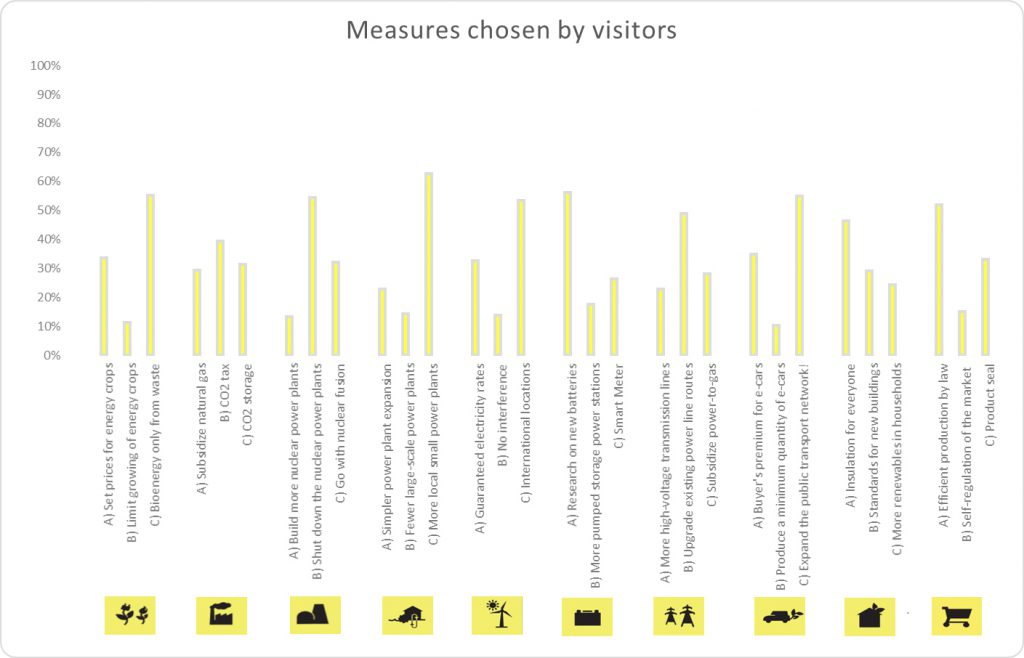
An ongoing PhD project, carried out by Sarah Kellberg and the Kiel Science Outreach Campus (KiSOC)[6], is going to invest the exhibition’s remits further. What is it that people take away from a visit to energie.wenden and how does that depend on whether they participate in the exhibition’s role-playing game?
The project ‘Promoting Energy Literacy with an Interactive Exhibition’ is based on the premise that exhibitions in general are able to foster scientific literacy (Falk and Dierking, 2010) and that energie.wenden as a ‘critical issues-based exhibition’ (Pedretti, 2004, p 34) even carries the potential to increase desired behaviour (i.e. productive participation in the energy transition) by fostering positive attitudes and dialogue between visitors (Goodman, 2015). Within the project it is investigated how a visit to the exhibition influences young visitors’ cognitive, affective and behavioural dimensions of energy literacy (DeWaters, Powers and Graham, 2007), which are necessary to make informed energy related decisions and to engage in the societal debate about energy transition. The investigation focuses especially on the aspects of socio-scientific reasoning (Sadler, Barab and Scott, 2007) – incorporated in the role-playing game – and visitors’ pre-existing school-based knowledge about energy. The goal is to identify good working design elements of informal learning situations as well as to learn about how visitors’ prerequisites like school knowledge and attitudes influence their engagement within the exhibition and the outcomes.
Ultimately, we would like to find out how best to connect museums and schools to engage future decision makers with the topic of energy transition. Investigating these questions will help us to gain further insight in how to best tackle ‘wicked problems’ in the future.
Acknowledgments
The authors would like to sincerely thank everyone who was, is, and is going to be involved in the energie.wenden project. Our thanks go to our colleagues at the Deutsches Museum, our scientific advisory board, who helped establish the content and to Space4 and teamtratenwerth, who did a great job designing this exhibition. We also want to thank the Ministry of Federal Economic Affairs and Energy, the Bavarian Ministry of Economic Affairs and Media, Energy and Technology as well as the Linde Group and the innogy Foundation for Energy and Society along with several others who generously helped us realise the exhibition.
Tags
Footnotes
Back to text
Back to text
Back to text
Back to text

